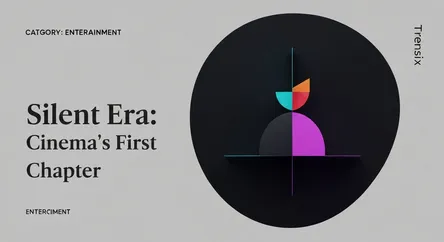Entertainment
Silent Era: Cinema's First Chapter

Discover the Silent Era of film (c. 1894–1929), a time of pure visual storytelling and innovation before synchronized sound changed movies forever.
What is it?
The Silent Era refers to the period of filmmaking from the earliest motion pictures in the mid-1890s until the widespread adoption of synchronized sound in the late 1920s. During this time, films had no spoken dialogue. Instead, narratives were conveyed through expressive acting, pantomime, and title cards known as intertitles, which presented key dialogue or plot points. Live musical accompaniment, from a single pianist to a full orchestra, was crucial to setting the mood and emotional tone during screenings. This era established many of the foundational cinematic techniques, genres, and star systems that still define the film industry today, with icons like Charlie Chaplin, Mary Pickford, and Buster Keaton becoming global superstars.
Why is it trending?
Interest in the Silent Era is experiencing a resurgence due to several factors. Modern award-winning films like "The Artist" have reintroduced the style to contemporary audiences, showcasing its timeless appeal. Additionally, film restoration projects and digital archives are making classic silent films more accessible than ever on streaming platforms and YouTube. Film enthusiasts and aspiring filmmakers are studying these early works to understand the fundamentals of visual storytelling, a skill highly valued even in today's dialogue-heavy cinema. This renewed appreciation highlights the era's artistic innovation and its lasting influence on filmmaking.
How does it affect people?
For audiences, watching a silent film is a unique and engaging experience. It requires a different kind of attention, forcing viewers to focus on visual cues, body language, and facial expressions to understand the story and characters' emotions. This often leads to a deeper appreciation for the craft of acting and directing. For filmmakers, the Silent Era serves as a masterclass in narrative efficiency and visual creativity, demonstrating how to build suspense, comedy, and drama without relying on words. It reminds us that at its core, cinema is a visual medium, and its foundational principles remain profoundly relevant.